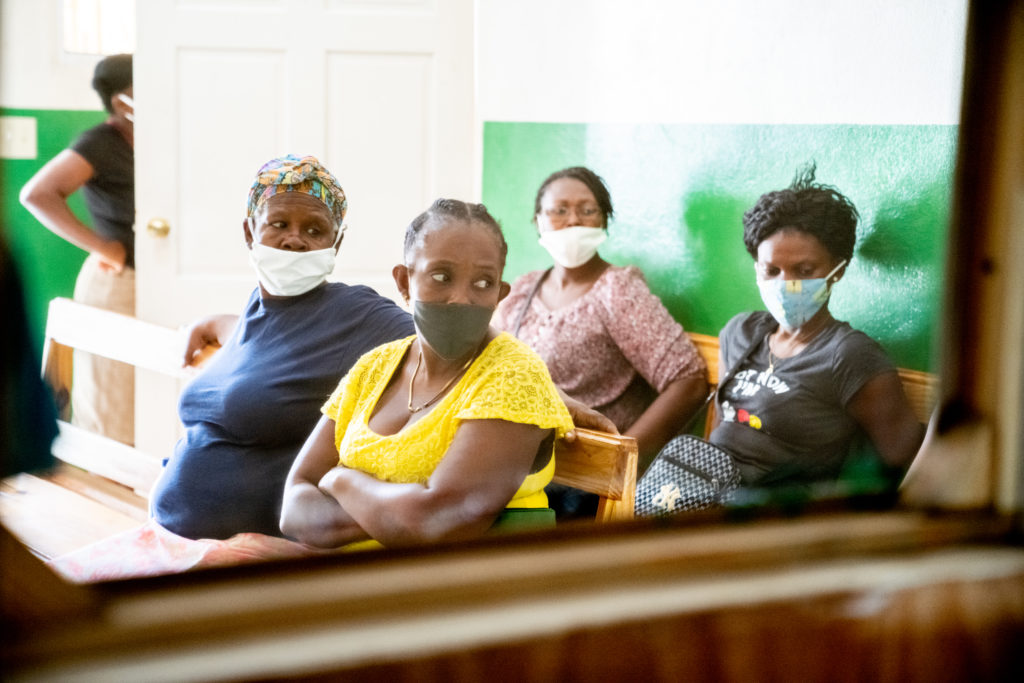As the second wave of COVID-19 cases surges in the U.S. and other countries brace themselves for an increase in cases this winter, we are seeing and hearing better news in Haiti. Haiti’s latest totals reveal less than 10,000 cases and 300 deaths in all.
Due to its very poor health infrastructure, we were expecting much higher numbers since our neighboring country, the Dominican Republic (DR), was reporting a high case count and now has 139,000 cases and 2,300 deaths.

When the first case was reported in Haiti on March 19, there was a lot of stigma associated with COVID-19. People burned down health centers because they didn’t want this virus in their area or were physically violent to Haitians showing symptoms of the virus. This kind of attitude, caused by fear and misinformation about COVID-19, made mitigation and control of the spread difficult in Haiti. Many people hid their symptoms, afraid of being targeted or isolated by their communities. At C2C, we focused on educating our patients and communities as part of our COVID-19 mitigation protocol. We showed informational videos in our waiting rooms, our nurses informed patients about COVID-19 symptoms and best practices upon arrival to our clinics, and our community health team traveled to remote areas to educate communities about how to reduce the spread of the virus.
From the beginning of the pandemic, we have put in place a protocol that outlines the steps to take when we have a patient showing signs and symptoms of COVID-19. We also worked closely with the Ministry of Health and scheduled testing for a patient whenever we encountered a suspected case. Although we were unsure how the pandemic would affect Haiti, we made every effort to keep all of our clinics open. We required (and still do) that all patients wear a mask at all times upon entering and while inside our clinics. We designated a quarantine site at each of our clinics where patients would be isolated if they showed signs or symptoms of COVID-19. We put a handwashing station at the entrance of all our clinics so that every patient coming in or leaving our clinics can wash their hands. We took the temperature of every person that entered the clinic. We also ensured that our staff is equipped with personal protection equipment (PPE), even though it costs three times the price to buy PPE and hand sanitizers in the country. Although we have not seen many COVID-19 cases at our clinics, the virus has affected our work significantly. Our patient volume greatly declined during the first few months of the pandemic and has started to slowly increase since September.

There are many theories as to why Haiti was not hit as hard as expected during the pandemic in comparison to other countries. For one, medical experts agree that half of the population is made up of young people who typically only develop mild symptoms or are asymptomatic. Some believe that the tropical Caribbean climate of Haiti played a factor in reducing the cases, as well as casualties. But most importantly, since the beginning of the pandemic, Haiti was issued a Level 4 travel advisory warning, its border with the DR has been closed, and all flights were halted which reduced the number of people entering the country and likely reducing the number of reported cases.
At C2C, we remain cautiously optimistic. Second waves in Europe and the U.S. have presented a stark reminder of just how important it is to continue to take this pandemic seriously. While it’s been admittedly difficult to adjust to this “new normal,” we cannot let our guard down and must continue to adhere to virus mitigation best practices. We continue to do our best to ensure that our clinics, staff, and the communities we serve are protected and supported.
